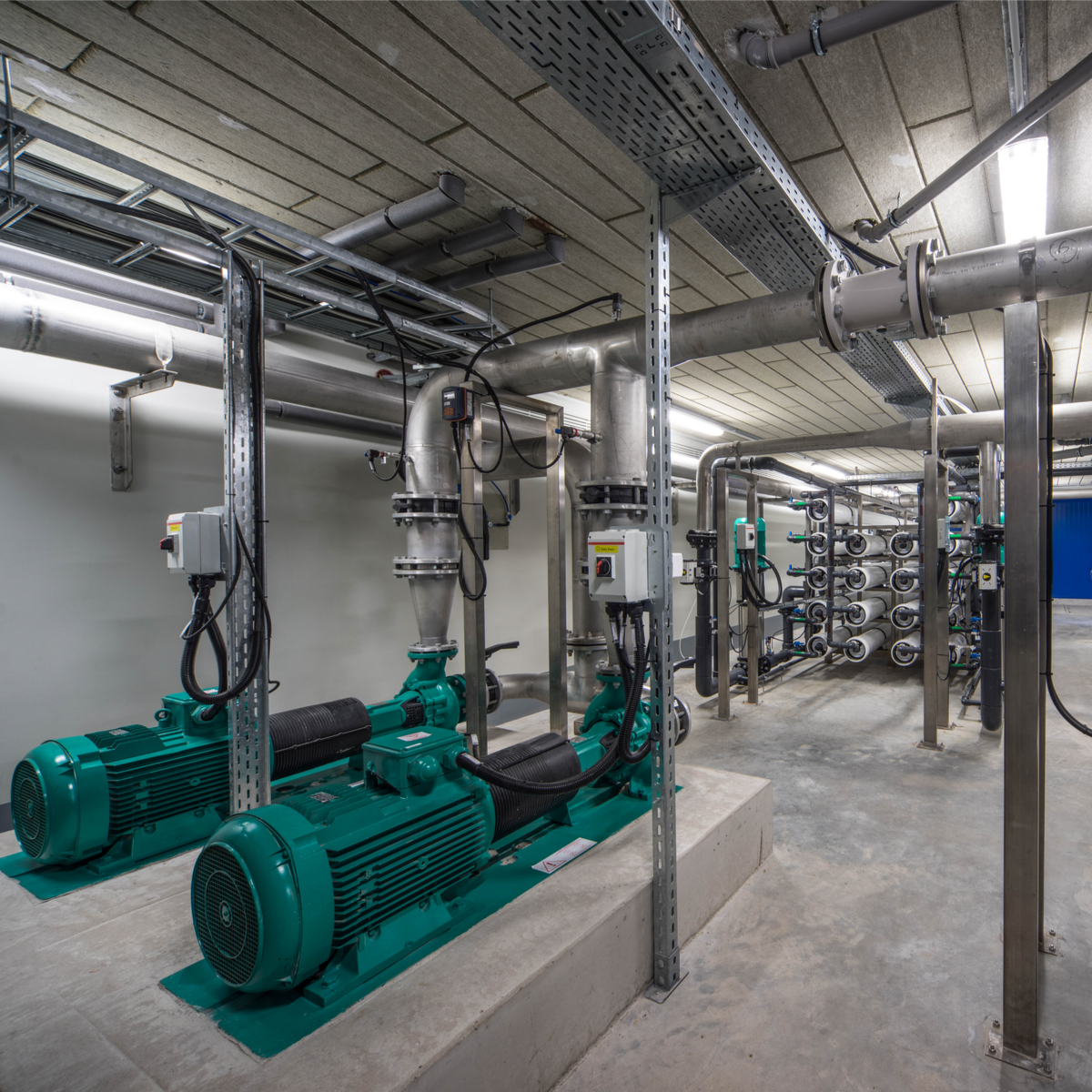
So you need a new pump for your facility. Which one do you choose? Industrial pumps come in many different types and sizes, which can make choosing the right pump difficult. Luckily, with a little background information, the options become a lot less confusing.Industrial pumps can be grouped into two main categories: centrifugal pumps and positive displacement pumps. Centrifugal pumps take up the lion’s share of the market, but positive displacement pumps play some key roles as well. Let’s take a look at these two categories of pumps so you can make a better decision on which type of pump best fits your facility’s needs.
Centrifugal Pumps
Centrifugal pumps work by transferring energy to a fluid via a shaft-driven impeller. Fluid enters along the axis of the impeller and is then slung out toward the pump casing with the rotating vanes of the impeller. The pump casing then slows and controls the fluid as it leaves, increasing its pressure. While the impeller and casing designs of centrifugal pumps can vary greatly, the basic design is the same.
The flow rate that these pumps produce is sensitive to the pressure drop downstream, which allows them to be easily throttled with valves. Centrifugal pumps can also be driven with variable frequency drives for a more energy-efficient approach to flow throttling. Pump performance curves are useful for determining how a centrifugal pump will operate in a given condition.
Positive Displacement Pumps
Positive displacement pumps work by enclosing a fluid in a fixed volume and then displacing the fluid. This action increases the pressure of the fluid and forces it through the system. The fluid is mechanically pushed through the system in a cyclic pattern where the pump is in suction (pulling the fluid into the pump) and compression (pushing the fluid out of the pump while increasing the fluid’s pressure).
Positive displacement pumps come in two main variations: reciprocating and rotary pumps. Reciprocating pumps have clearly defined cycles of suction and compression. The repeated back-and-forth movements of a reciprocating pump are called “strokes.” Some of the most common forms of reciprocating pumps are:
- Piston
- Plunger
- Diaphragm
Rotary pumps use a rotating component to push a fluid through the system. Rotary pumps tend to have less surge and have less well-defined cycles when compared to reciprocating style pumps. The most common rotary pumps are:
- Screw
- Gear
- Roller
- Vane
Which Pump is Better?
With so many pumps out there, how do you choose the right one? Luckily, each style of pump has a range of applications in which it excels. Clearly defining your application is the first step in choosing the right pump. Let’s look at some of the most common applications for different pumps.
Are you pumping a high or low viscosity fluid? Rotary pumps require a high viscosity in order to generate a proper liquid seal during operation. Centrifugal pumps, on the other hand, begin to lose efficiency as the viscosity goes up. The high speed of the impeller wastes a lot of energy moving through a highly viscous fluid.
Do you need to accurately measure the amount of fluid being moved? Certain positive displacement pumps, like gear and vane pumps, are very good at metering. They are not affected much by the feed pressure and therefore can deliver a constant flow, even as conditions change. Centrifugal pumps operate along a performance curve, meaning the flow rate will change as the pressure drop downstream of the pump changes.
What about the pressure requirements? One of the best attributes of positive displacement pumps is their ability to deliver high pressure at low to moderate flow rates. Positive displacement pumps are so good at delivering constant pressure that pressure relief valves may need to be installed downstream in case of a blockage. The valves will prevent the pressure from getting dangerously high. Centrifugal pumps, however, can deliver very high flows at lower pressures. If the feed pressure varies, the flow rate of the centrifugal pump will vary.
Is the fluid you’re moving sensitive to shear? The tips of the impellers in centrifugal pumps move at very high speeds. If the fluid being pumped is sensitive to shear, positive displacement pumps (like gear or lobe pumps) are a safer choice. Those pumps move the fluid more gently than centrifugal pumps.
Centrifugal pumps are also much better at delivering a constant, even flow. Due to the cyclical nature of positive displacement pumps, pipe hammer and vibrations can cause problems unless the piping system is carefully designed. Centrifugal pumps work in a continuous manner, avoiding many of these issues and simplifying the piping required.
No matter what your application, knowing which pump to choose is the key to achieving smooth operation. Whether a centrifugal or positive displacement pump, there’s a pump out there to do what you need to do. For all of your pump requirements, give us a call, and our team will be happy to assist you.
